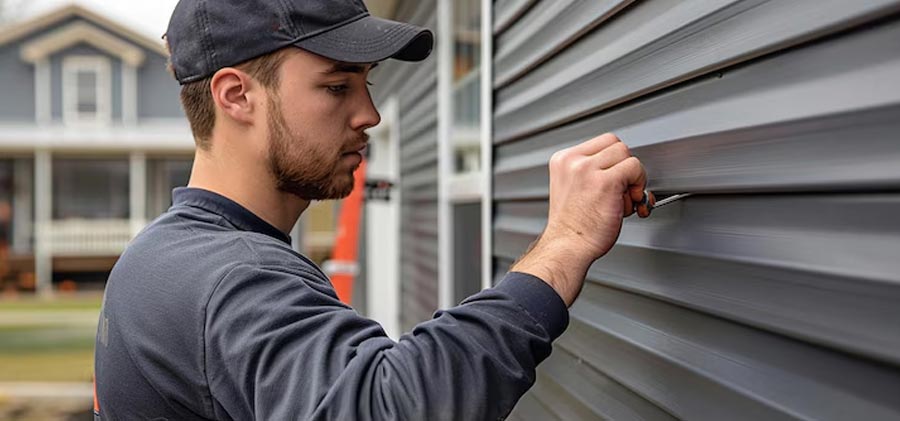Garage door springs play a crucial role in balancing the weight of the garage doors. It is difficult to open a garage door without these springs. There are two different garage door spring types; Torsion and Extension springs. If you are confused between torsion vs extension springs, then you should consider the type of spring, the quality of the material, the frequency of use, and their lifespan while deciding the right one for your garage.

Types of Garage Door Springs and Their Lifespan
Torsion Vs. Extension Springs
There are two garage door spring types: torsion and extension springs. Each spring has different characteristics and their lifespan can vary.
Torsion Springs
Garage door spring types include torsion springs, which are mounted above the door and twist to store energy. They are strong and can handle heavier garage doors.
Usually, torsion springs last about 10,000 to 20,000 uses, which means they last around 8 to 15 years, depending on how often you use the door.
Things like how frequently you open and close the door, the door’s weight, and keeping up with spring maintenance can affect their lifespan.
If you use your garage door a lot each day, the springs may wear out faster and need replacing sooner. Regularly adjusting the springs to keep them tight can help them last longer.
Extension Springs
Extension springs are located on both sides of the garage door and help it move up and down by stretching and compressing. They are typically used for lighter garage doors.
These springs usually last about 5,000 to 10,000 cycles, which means they can last around 7 to 10 years. Because of the way they work, extension springs wear out faster than torsion springs.
They experience more stretching, which can lead to spring fatigue over time. It’s important to regularly check these springs for any signs of wear, like rust, gaps between the coils, or a decrease in spring tension.
If you notice these issues, it may be time for garage spring replacement and spring tension adjustment to ensure your garage door works properly.
Warning Signs For Replacing Garage Door Springs
There are a few warning signs that you can notice to understand when you need to replace the garage door springs.
It becomes difficult to lift the garage door
One of the main signs of broken springs is having difficulty lifting your garage door even if you are doing it by using the opener. This issue occurs because the springs can’t support the door’s weight properly anymore due to a loss of tension. This could be possible signs of broken springs.
The garage door falls quickly
If your garage door drops quickly after you open it, this could be a sign of broken springs. The springs are not strong enough to hold the door up properly, which can be dangerous. You may need a spring tension adjustment to fix this issue.
Gaps in the Coils
If you notice visible gaps between the coils of your springs, it’s a clear sign of broken springs. This happens when the springs get stretched out and don’t work properly anymore.
The lifespan of torsion springs and extension springs depends on how many times they’ve been used, so if you see gaps, it’s time to replace them. Remember these spring safety tips to keep everything functioning well!

Rust and Corrosion
Rust can shorten the life any garage door spring types. As time goes on, rust makes the metal weaker, which can cause the springs to break.
Keeping your garage door springs lubricated regularly can help stop rust and make them last longer. If you notice signs of wear, you might need a garage spring replacement.
The Garage Door Opener Struggles
If your automatic garage door opener is working harder than usual or making strange noises, it might mean that the springs need adjustment.
The springs hold most of the door’s weight, so if they are worn out, the opener can have trouble lifting the door, which could damage it.
You should follow a few spring safety tips, such as making spring tension adjustment and regular inspection to resolve the issue.
You can replace the garage door springs with new ones to resolve these issues. While choosing between torsion vs extension springs, you should consult a professional for better decision.
FAQs
You should know when to change your garage door springs to keep your garage door working well. If you ignore worn-out springs, they can break easily and damage your door or cause injuries.
You should replace your garage door springs, if they have reached the expiry date. The ideal lifespan should be about 7-10 years for extension springs and 10-15 years for torsion springs.
It can be risky to change the garage door springs, if you lack knowledge and expertise. You can change it yourself if you are skilled enough to do so. However, you can hire a professional to avoid possible dangers while replacing the garage door springs.


